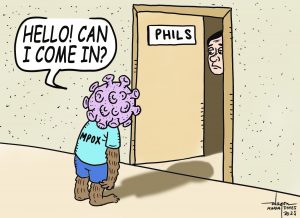In an effort by the national government to appease the people of Mindanao in what could be perceived as their (Mindanaoans’) revulsion in the treatment of the country’s southern region, administration after the administration came up with strategies supposedly to consolidate the efforts to develop the island.
During the Marcos Sr. years, it created the Southern Philippines Development Authority (SPDA). In its initial years, the agency developed several significant development programs for the southern region. But when the elder Marcos was driven out of the country, the SPDA morphed into almost an empty structural organization with only the remainder of the bosses of its big-ticket projects and their subalterns seen as visible and continued collecting their salaries.
Then the Mindanao Economic Development Council (MedCo) came into being even as alongside it, the Bangsamoro Autonomous Region was created solely for the purpose of addressing the concerns of the Moro people in Mindanao.
However, it looks like either the national government or the people in Mindanao, our Muslim brothers included, of course, believe that both the MedCo and the Bangsamoro Autonomous Region were still wanting in the performance of its responsibility in bringing socio-economic and political development in the island.
This was so because the political, business and other sectoral leaderships still decided to convert the two agencies into something that could have more extensive leeway in attaining its development objective.
Thus, the government eventually converted MedCo into another entity, the Mindanao Development Authority (MinDA), and the Bangsamoro Autonomous Region was slightly changed to Bangsamoro Autonomous Region for Muslim Mindanao.
The latter body seems to be turned into more specific in terms of area coverage as well as of the people who are to be made beneficiaries – the Mindanao Muslims living in the defined coverage areas.
It’s really been a long journey since the inception of the forerunner agencies of both the MinDA and BARMM. In the case of MedCo (for MinDA), we were a silent witness to the frustration of those who composed the Council, the chair of which was then Usec. Virgilio Leyretana. The MedCo, while perceived with a strong influence to the national leadership being a creation thereof, was, as it was, a mere recommendatory body, an advice provider to the national administration, and more often mere organizer of discussion fora for issues, programs, and projects the Council believes appropriate for the Mindanao situation.
It was perhaps during some of its discussions that Sec. Leyretana goaded the political leaders of Mindanao that it was time for MedCo to evolve into a more responsive and authoritative agency that could intervene in government plans and projects. It was from there that the lobbying began for the conversion of MedCo into a Mindanao Development Authority (MinDA).
MedCo itself, under Leyretana and the support of his core staff, initiated the snowballing of the lobby that eventually led to the introduction of bills in both houses of Congress, which, when finally approved, became Republic Act 9999. Thus the MinDA was born, which was signed by former President Gloria Macapagal Arroyo, a longtime resident of Iligan City in Lanao del Norte.
Secretary Leyretana’s being on top of the Mindanao development body was, however, up to only the MedCo’s existence. When MinDA started its operational run, until today, three persons had already assumed leadership. One, a Muslim, died before completing his six-year term. Another quit his chairmanship to run for Senator. The incumbent is former Davao City Councilor Mabel Sunga Acosta.
The MinDA was and is expected to be clothed with more authority as a product of the legislative process. That is, a mandated power to administer the government’s plans, programs, and projects in Mindanao in coordination with the local government units.
But how far has MinDA succeeded in its mandate? How many of its conceived programs and projects accepted by the LGUs had been approved by the National Economic Development Authority (NEDA) and submitted to Congress for funding?
While we did not have any involvement in any activities by MedCo and Minda in its earlier existence our being a media person and later as a corporate communications person of a critical industry in Davao City, we cannot help but make ourselves aware of what the government was doing then to solve the socio-economic problems haunting the island.
Hence, we knew that the efforts of the then MedCo chair Leyretana (now in the US) and his core staff, with the full backing of the island’s political, non-government organizations, academe, business, civic, agriculture leaders, and the military were all geared towards attaining peace in Mindanao.
Its initiators envisioned MinDA as the fulcrum for peaceful co-existence and development of the island and aggrandizement of its people, be they Christians or Muslims.
But as we said earlier, we have yet to hear, much more see, concrete proof of MinDA’s accomplishments of its mandated tasks. We are now strongly encouraging the present MinDA leadership to come up with a documented report to the people of what it has accomplished vis-à-vis its objectives. The people, specifically the Mindanaoans whose taxes help subsidize the agency’s operation, deserve to know.
Our friend Usec Mabel and her team can very well do it.




